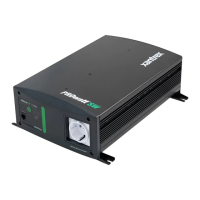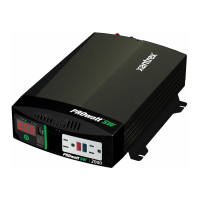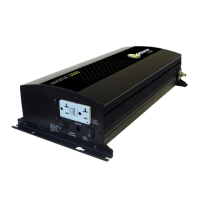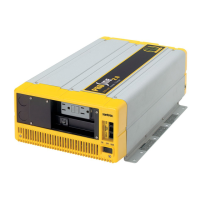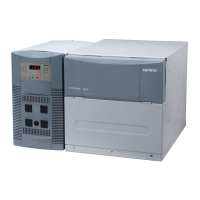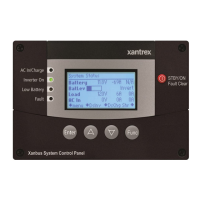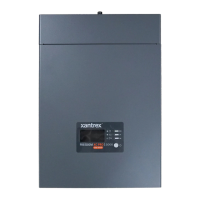Index
Index–2
estimating worksheet C–5
estimating your needs
3–4, C–3, C–4
C
cable clamp 2–2, 3–3, 3–7
cables. See DC cables.
charging
from AC power
B–3
from alternative energy sources
B–3
with engine alternator
B–2
charging frequency for batteries
4–7
charging systems
designing a system
3–4, B–2
requirements
B–2
chassis ground
for fixed locations
3–13
for marine installations
3–12
for photovoltaic (PV) installations
3–13
for recreational vehicles
3–12
guidelines for connecting
3–11
chassis ground lug
2–7
circuit breaker for AC receptacle
2–5, 3–6, 4–3
communications cable
described
2–8
extending length
3–11
in materials list
2–2
maximum length
3–11
cover plate, for wiring compartment
2–2, 3–8
current draw, no load
1–2, 4–2, A–2
Customer Service
email
2–2, D–2
fax number
2–2, D–2
phone number
2–2, D–2
preparing to call
D–4
D
DC cables
avoiding excessive lengths
3–5
correct polarity
3–16
guidelines for selecting
3–13
procedure for connecting
3–14
recommended diameter and length
3–13
DC cabling terminals
2–7
depth of discharge (DOD)
C–5
E
electrolyte level C–8
explosive gases
xi, 3–16, C–8
F
freezers 4–6
fuses
for DC cables
3–3, 3–14
inverter, replacing
5–3
G
gases
battery, venting
3–5
explosive
xi, 3–16, C–8
generators
1–2, 3–7, 3–9
H
hardwiring 3–6
high-output alternator
described
B–3
installing
B–3
mention
3–3
hydrometer
C–9
I
indicators
AMPS
2–4, 4–3, 5–3, 5–4
how to read
4–3
INVERTER ON
2–8, 4–2
OVER LOAD
2–4, 4–4, 5–4
OVER TEMP
2–4, 4–4, 5–4
VOLTS
2–4, 3–17, 4–3, 5–3
input voltage
4–5
installation
codes
3–2, 3–12
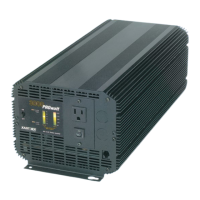
